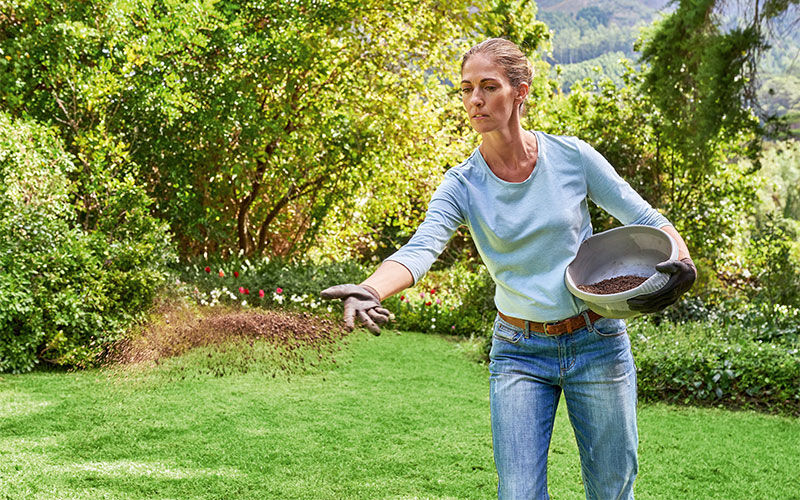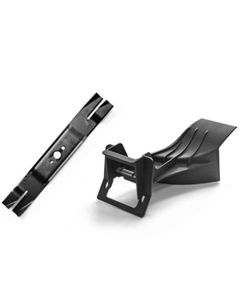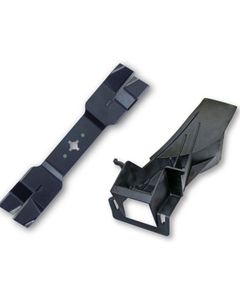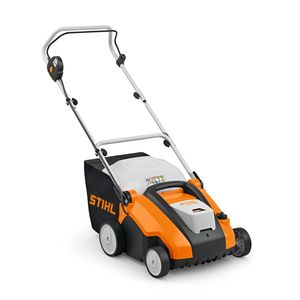How To Care For Your Lawn

WATERING YOUR LAWN
Summer can be a particularly stressful time for your garden’s biggest asset. To maintain your lawn over the dry summer months it is essential to water it.
HOW OFTEN SHOULD I WATER AND HOW MUCH?
As a rule of thumb, 15-25mm of water a week per square meter is a good guide in summer, however it ultimately depends on the type of soil you have. A good soaking once a week is much better than light, frequent watering, as light watering will result in shallow root growth and your grass will be less resilient to drought. In comparison, deep and infrequent watering will encourage longer roots as they will grow in search of water.
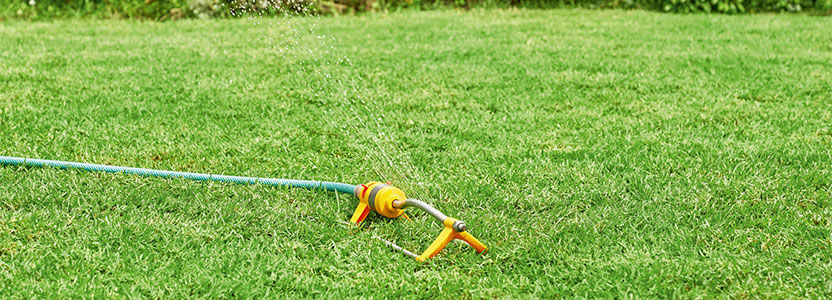
WHEN IS THE BEST TIME TO WATER?
Aim for before 10:00am – before the sun really starts to heat up and the water evaporates too quickly to penetrate the roots. If you can't water in the mornings, make sure you don't leave it until too late in the evening. When you water your lawns at night, the moisture sits on the leaves and this can lead to fungal problems.
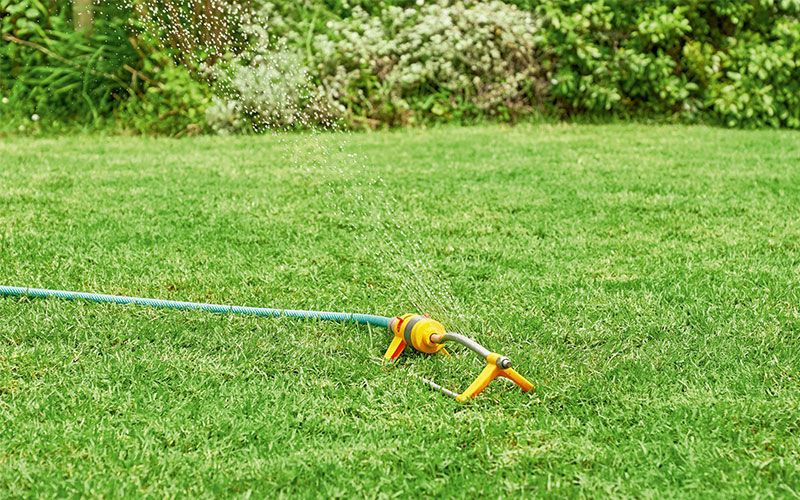
MOWING TIPS FOR THE PERFECT LAWN
TIP 1: HOW MUCH GRASS CAN I CUT?
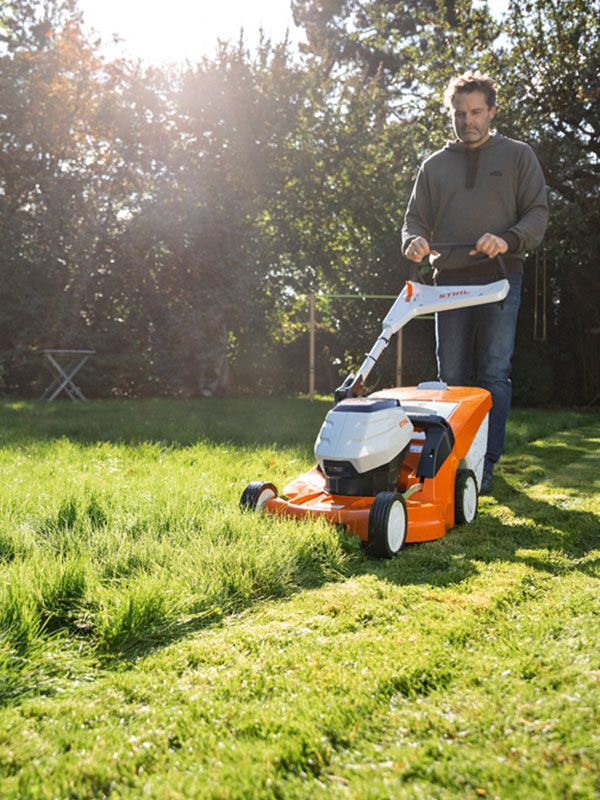
In sunny areas, keep your mowing height at 4-5cm and in shady areas 5-7cm. If a heat wave is on the way, your lawn should be kept a little longer so that the stalks shade each other from the sun.
Kiwis traditionally like to cut the grass right down to the ground - this is called scalping, which can weaken your grass and even kill it. When the grass is too short, it can’t get the nutrients it needs and weeds can end up taking over. Longer grass encourages healthier, deeper root growth - this helps thicken and strengthen your grass and as a result you will have a better looking and more luscious lawn.
STIHL Battery Lawnmowers have various cutting heights to choose from and can easily be lowered or raised by using the leaver on the side of the machine.

TIP 2: WHEN AND HOW OFTEN SHOULD I MOW MY LAWN?
The best mowing practice is to mow only when your lawn needs it. However, regular mowing will increase the density of your lawn because your grass blades will form new side shoots. In the summer when the temperatures are higher, you should let your lawn grow longer as this will help retain moisture in your soil.
Avoid mowing in the hottest parts of the day, as this will put stress on the grass. You will help your lawn stay green by mowing when its dry but before it gets too hot or alternatively by waiting until the sun starts to set.
TIP 3: AVOID MOWING A WET LAWN
You should let the grass dry completely before mowing. Mowing wet grass can cause damage to your lawn and prevent healthy future growth because diseases can be spread through wet grass more easily. Wet grass also clumps and sticks to your blade, making it hard to get an even cut.
TIP 4: MOWING DIRECTION / PATTERN
Grass tends to lean in the direction it’s mowed. Switch your mowing pattern and direction each time to encourage upright and even growth.
Or for a special occasion why not try a stripe pattern? Mow around your lawn’s perimeter and pick a side to start mowing parallel to the grass edge. Once you get to the end of the lawn, lift the mower and face it in the opposite direction. Mow parallel to the last strip you mowed, and keep changing direction until the entire lawn has stripes.
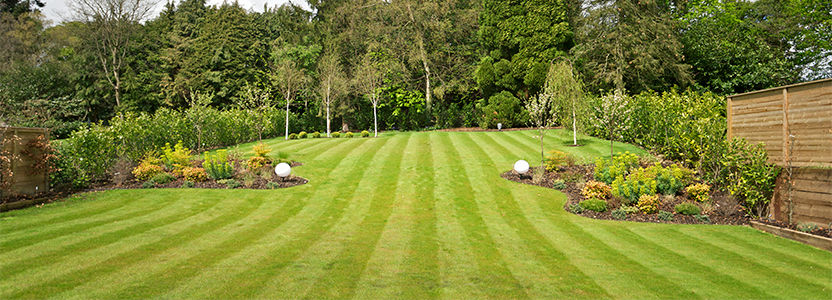

TIP 5: HAVING SHARP BLADES
Sharp Lawn mower blades are very important. Blunt blades create ragged cuts, making your grass more susceptive to pests and diseases. Make sure you sharpen your blades at least once per mowing season. You can tell when it's time to sharpen your blades by looking at the tips of the grass blades - if they are jagged or torn looking after mowing or have brown and yellow edges, you know it’s time to either sharpen the blades or buy new ones.

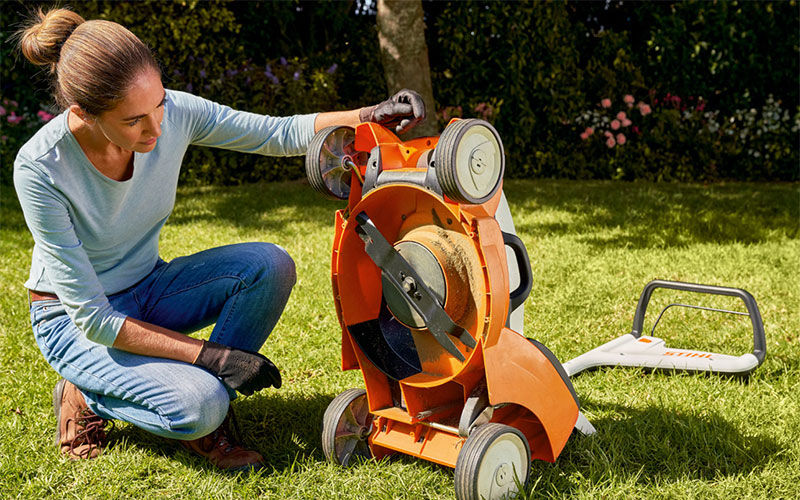
TIP 6: TO CATCH OR NOT TO CATCH
Leaving your lawn clippings on the ground after mowing is good for the health of your lawn because it returns valuable nutrients to the grass. The clippings contain nitrogen, phosphorus and potassium, which are all natural fertilisers. A thin layer of lawn clippings will quickly and efficiently break down into your lawn, while also saving trips to empty the catcher. However, it’s essential to make sure your clippings are well spread out, if the grass is too long, then put it into your compost heap or use it as mulch. Many STIHL Battery Lawn Mowers can be fitted with Mulching Kits to shred the cuttings more finely.
WHY AND WHEN TO SCARIFY OR DETHATCH YOUR LAWN?
A Scarifier breaks up and removes unwanted plants like moss covering the surface of your lawn. If your lawn contains dead plant material, a Dethatcher will remove it. By using a Scarifier and Dethatcher you will ensure water and nutrients can reach the grass roots more easily so they become healthier and stronger.
The dual purpose STIHL RLA 240 is the perfect Scarifier and Dethatcher for medium sized gardens up to 500m². This battery operated tool is easy to use, lightweight and highly manoeuvrable.
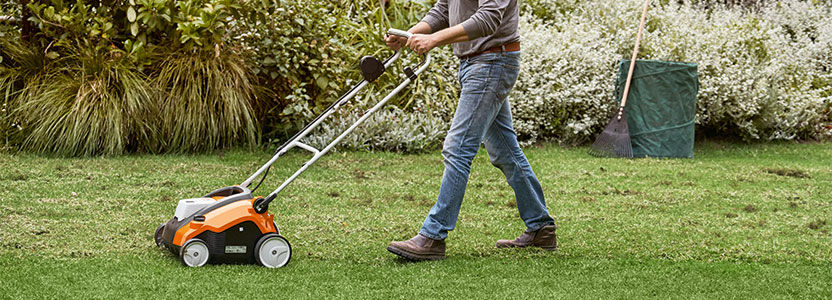
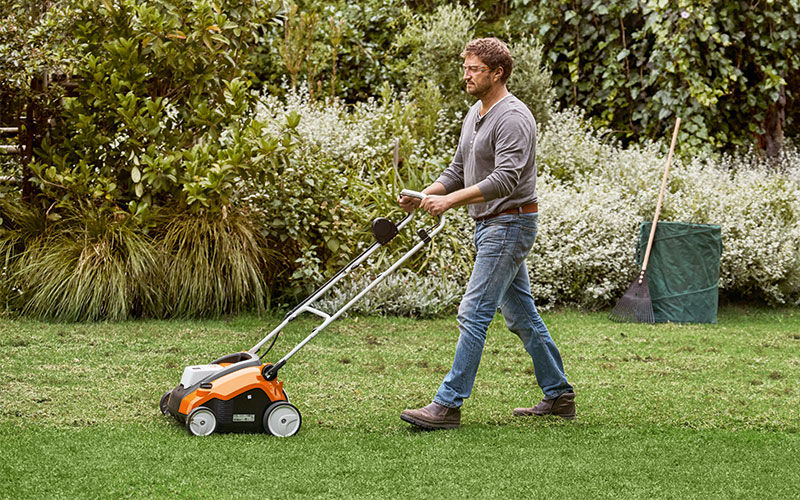
If you have a bigger lawn, you can use the STIHL MM 56 Multi Engine with Dethatcher Attachment.
FEEDING AND FERTILISING YOUR LAWN
Good soil health leads to a healthy lawn. You can buy DIY soil testing kits, which help you to measure your soil’s pH level, between 0 and 14. A result below 7 means your soil is acidic. Above 7, indicates it’s alkaline. Try to keep the level in the middle, if it’s too acidic you can add crushed lime to your soil. If it’s too alkaline, add peat moss or sulphur.
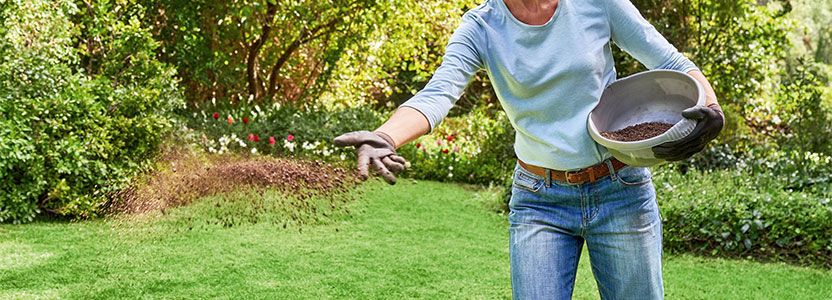
For a great looking lawn test your soil annually in spring and add nutrients accordingly. Always be carful not too add too much fertiliser as you can end up killing your lawn. Apply dry fertiliser to a moist lawn – after rain is ideal. Water after feeding to prevent your lawn from burning.
If your lawn is well-established fertilise in spring and autumn, for best results apply the fertilizer after mowing. For new lawns, wait until you have mown three or four times before you feed it.
